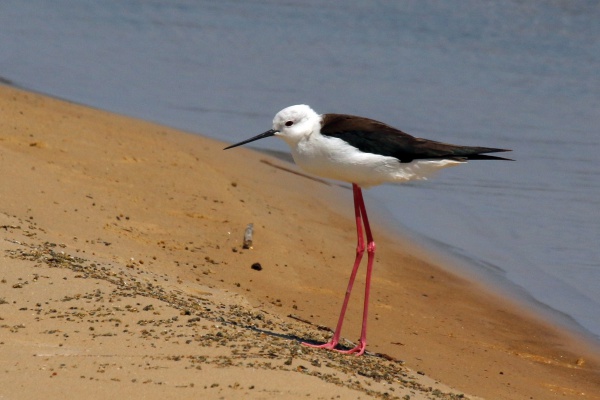Facts About Black-winged stilt
The black-winged stilt, known scientifically as *Himantopus himantopus*, is a striking bird distinguished by its long legs and belongs to the avocet and stilt family. Once believed to be a single species distributed globally, it is now recognized as a species with a range spanning Europe, Siberia, and Africa. The name *Himantopus* is derived from Greek, meaning "strap foot" or "thong foot." Presently, between two and four species are acknowledged within this genus.
Adult black-winged stilts stand about 33-36 cm tall, featuring distinctive pink legs, a slender black bill, and contrasting blackish upperparts with white underparts. Males typically have a black back with a greenish sheen, while females have a brownish tint on their backs. Juvenile birds have a grey appearance with a sandy tone on their wings.
The classification of the black-winged stilt remains a topic of debate, as it is one of five species that were once considered subspecies of *Himantopus himantopus*. The black-winged stilt, in the strict sense, is referred to as *Himantopus himantopus sensu stricto*, which includes two subspecies: *H. h. himantopus* from the Palearctic region and *H. h. meridionalis* from the Afrotropical region.
These birds prefer breeding in habitats such as marshes, shallow lakes, and ponds. While some populations migrate, others are sedentary or move short distances. Their diet consists of insects and crustaceans, typically picked from sand or water. Nesting sites are often bare spots near water, and they tend to nest in small groups, sometimes alongside avocets.
In Europe, black-winged stilts can occasionally be seen north of their usual range during spring. Remarkably, they have even bred successfully in places like Britain, with recent breeding instances in Southern England. The black-winged stilt is also protected under the Agreement on the Conservation of African-Eurasian Migratory Waterbirds, ensuring their conservation across multiple countries.

 Zambia
Zambia